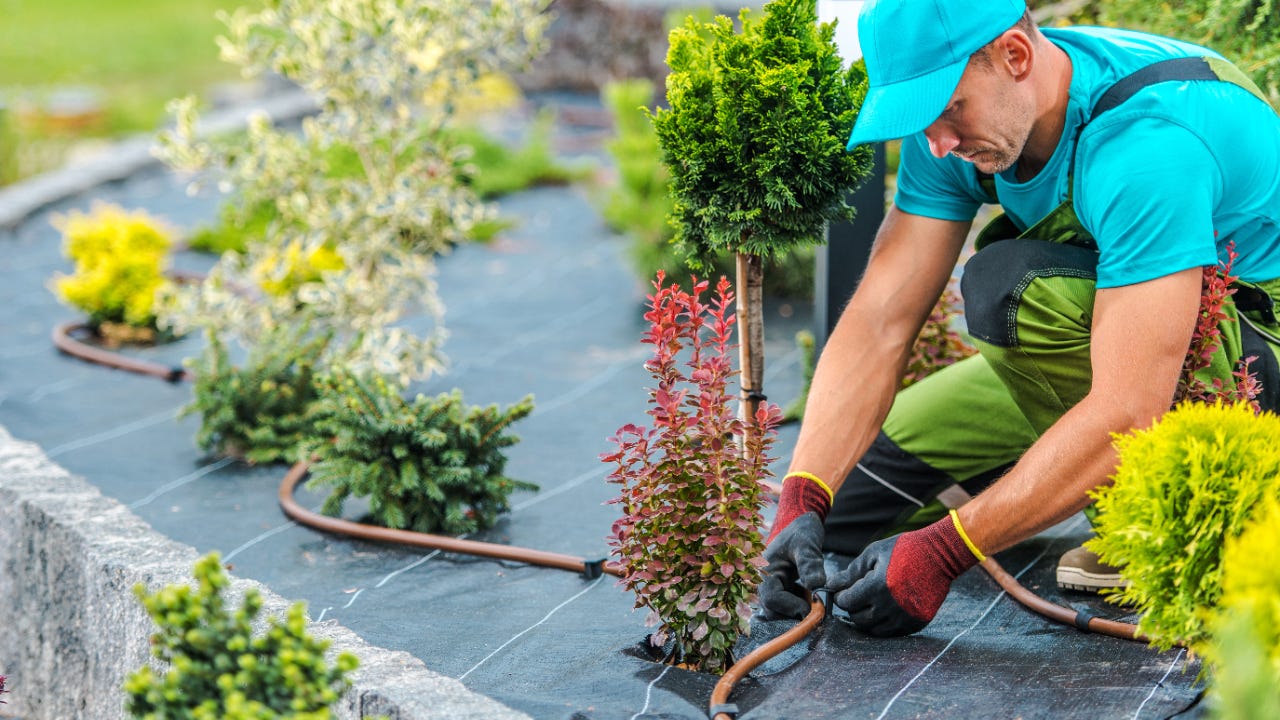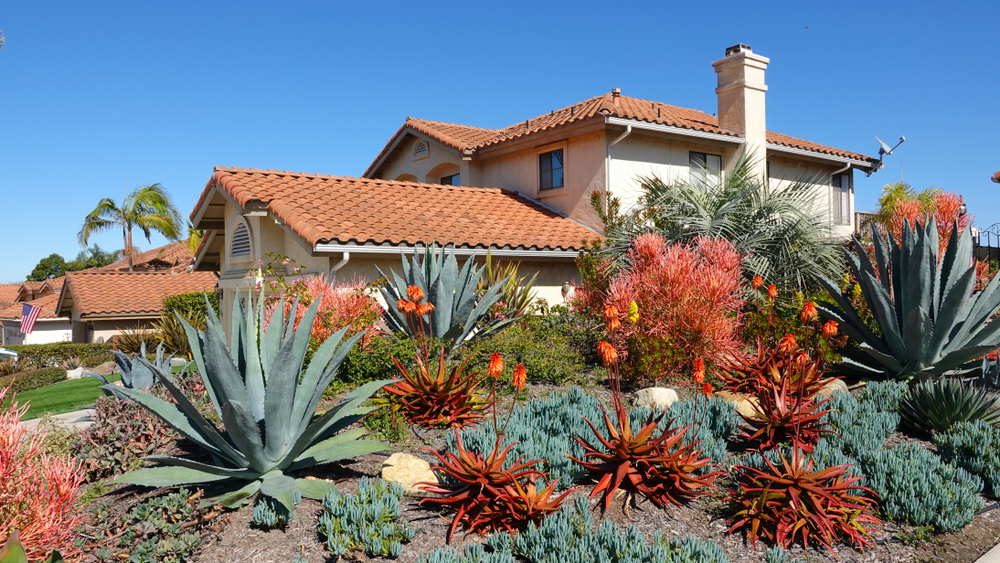The Relevance of Understanding Various Kinds of Landscaping for Your Yard
Recognizing the various kinds of landscape design is a crucial element in crafting a yard that not just reflects personal preference but also fulfills ecological demands. Each landscaping style-- be it official, home, lasting, or urban-- supplies distinctive benefits that can substantially influence the overall health and wellness and aesthetic appeals of your outside room. This expertise is critical in promoting biodiversity and maximizing source utilization. The ramifications of these options extend beyond mere visual appeals, increasing concerns regarding how each type can be integrated effectively right into your details setting. What factors to consider should lead your choice?
Advantages of Landscaping Knowledge
Recognizing the fundamentals of landscape design uses various advantages for both amateur and knowledgeable gardeners alike. A strong grasp of landscape design concepts makes it possible for individuals to develop aesthetically appealing and useful outdoor spaces that straighten with their personal choices and the particular characteristics of their yards.
One significant advantage is improved ecological wellness. Understanding of lasting techniques and native plants permits gardeners to grow ecosystems that advertise biodiversity while minimizing the requirement for chemical plant foods and pesticides. In addition, understanding dirt kinds and drain can result in healthier plant growth and minimized disintegration.
Landscaping understanding additionally enhances the visual worth of a building. By learning more about layout elements such as range, shade, and appearance, gardeners can create natural and welcoming landscapes that increase curb charm. This not just raises individual satisfaction but can also improve residential or commercial property value.
Moreover, educated garden enthusiasts can conserve time and sources. Identifying the right plants for specific conditions, such as light and moisture levels, guarantees that efforts are not squandered on inappropriate options. Ultimately, an extensive understanding of landscaping empowers individuals to make informed choices, cultivating an extra fulfilling horticulture experience.
Summary of Landscaping Kinds
Landscaping includes a variety of styles and approaches, each tailored to meet the unique needs and choices of garden enthusiasts. Comprehending these diverse types is crucial for developing an outdoor area that aligns with individual preferences and ecological considerations.
One prominent type is traditional landscape design, defined by structured formats, distinct flowerbeds, and the use of symmetrical growings. This design commonly highlights a sense of order and consistency within the garden - Commercial Landscaping. On the other hand, naturalistic landscaping concentrates on imitating the beauty of nature, using natural types and indigenous plants to produce an extra kicked back and informal setting
Sustainable landscape design has obtained traction, advertising environment-friendly practices that preserve water and reduce chemical usage. This technique commonly includes xeriscaping, which utilizes drought-resistant plants ideal for arid environments. Additionally, metropolitan landscaping addresses the challenges of minimal space in city atmospheres, often using upright gardens and rooftop rooms to take full advantage of greenery.
Official Landscaping Described
Identified by its meticulous style and organized elements, formal landscaping creates an environment of style and sophistication in outside rooms. This design emphasizes symmetry, geometric shapes, and distinct lines, usually including polished hedges, topiaries, and orderly flower beds. The general impact is a refined and polished environment that draws interest to building attributes and boosts the beauty of the surrounding landscape.
In formal landscaping, pathways are typically straight and may be lined with consistent materials such as brick or stone. These paths typically cause focal factors such as water fountains, sculptures, or decorative trees, additionally improving the organized nature of the style. Color combinations have a tendency to be a lot more restricted, concentrating on unified mixes that advertise a tranquil environment.
Water functions in formal landscapes are typically developed with precision, often looking like rectangle-shaped or circular swimming pools. The cautious placement of plants is important, with species chosen for their capacity to preserve a tidy appearance throughout the periods. Generally, formal landscaping is suitable for those who appreciate order and elegance, supplying an ageless aesthetic that can considerably elevate the worth and appeal of outdoor rooms.
Cottage Yard Qualities
Home gardens usually evoke a feeling of appeal and fancifulness, blending a selection of plants in a relatively careless yet harmonious setup. Characterized by their lavish, informal design, these yards usually include a diverse mix of flowering perennials, natural herbs, vegetables, and annuals. This varied growing not only produces aesthetic interest helpful site however additionally draws in valuable bugs and promotes a balanced ecological community.
A key attribute of home gardens is their use of standard products and structures. Stone pathways, rustic fencing, and wooden trellises are frequently included to improve the yard's enchanting allure. Additionally, the addition of seating locations, such as benches or arbors, motivates leisure within this calm setting.
Color plays a considerable function in home yards, with a focus on soft pastels and dynamic colors that stimulate a feeling of fond memories. Blossoms like hollyhocks, foxgloves, and roses are staples, usually intermingled with great smelling natural herbs such as lavender and thyme.
Home yards show an approach of welcoming nature's changability, causing an one-of-a-kind and welcoming room. By focusing on biodiversity and visual appeal, they produce a stunning setting for both garden enthusiasts and casual observers alike.
Sustainable Landscape Design Practices
Including lasting landscape design methods is vital for creating environmentally friendly yards that prosper while decreasing their environmental effect. Landscaping Company. Lasting landscaping concentrates on the efficient usage of resources, promoting biodiversity, and boosting the natural surroundings
One key technique is picking native plants, which are well-adapted to local problems and official statement need less water, plant food, and pesticides. This not only preserves resources but additionally supports local wild animals, including pollinators. Implementing water-efficient irrigation systems, such as drip irrigation or rain harvesting, additionally conserves water while ensuring that plants get sufficient dampness.

Moreover, minimizing lawn areas and integrating hardscaping components can lessen maintenance and source usage. These practices promote an even more lasting landscape that requires fewer inputs and supplies eco-friendly benefits. By embracing these techniques, garden enthusiasts can create spaces that are not only attractive but likewise add favorably to the setting, cultivating a harmonious equilibrium in between nature and human task.

Conclusion
In conclusion, an extensive understanding of various landscaping kinds is essential for developing a cosmetically pleasing and eco lasting garden. Each style, from formal to home yards and sustainable practices, offers one-of-a-kind advantages that improve biodiversity and source performance. This understanding helps with informed choices that add to the health and wellness of both the garden and its surrounding ecosystem. Inevitably, accepting diverse landscaping strategies promotes an unified connection between exterior areas and their settings, promoting lasting environmental balance.
Comprehending the numerous types of landscape design is a vital part in view website crafting a garden that not just reflects individual taste yet likewise fulfills ecological requirements. Each landscape design style-- be it official, home, sustainable, or metropolitan-- provides unique benefits that can significantly influence the general wellness and looks of your outdoor area. In comparison, naturalistic landscape design focuses on imitating the elegance of nature, utilizing natural types and indigenous plants to create a much more kicked back and casual setting.
Additionally, metropolitan landscape design addresses the obstacles of limited area in city environments, commonly utilizing vertical gardens and rooftop rooms to make best use of plant.
In conclusion, an extensive understanding of different landscape design kinds is necessary for developing a cosmetically pleasing and environmentally lasting yard. (Landscape)
Comments on “Rely upon a Full-Service Landscaping Company for Residential and Commercial Projects”